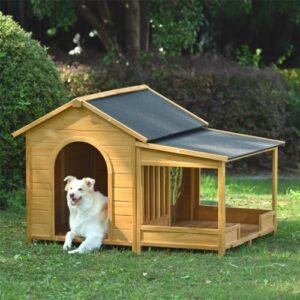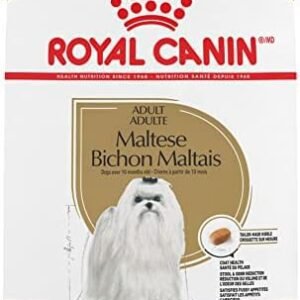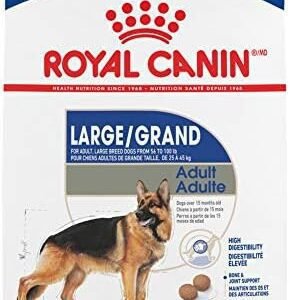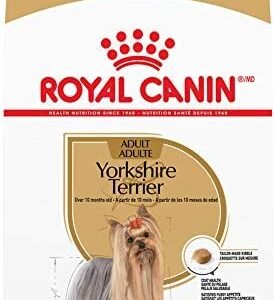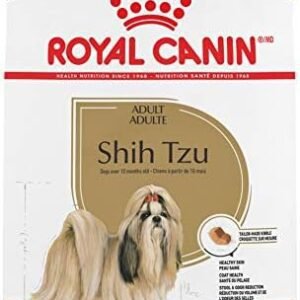Did you know a significant portion of dogs, nearly 60%, face gastrointestinal issues during their lives? This fact underlines the critical need for knowledge on managing these problems efficacently. Carafate, or sucralfate, comes highly recommended by veterinarians for dogs struggling with ulcers and various digestive disturbances. Through this detailed guide, we aim to cover Carafate’s usage for dogs, including recommended dosages and potential side effects, empowering you to support your pet’s health effectively.
Key Takeaways
- Carafate is commonly prescribed for dogs with gastrointestinal ulcers.
- Understanding the proper carafate dosage for dogs is crucial for effective treatment.
- Both carafate liquid for dogs and carafate tablets for dogs are available.
- Pet owners should be aware of potential carafate side effects in dogs.
- Close monitoring is essential to ensure your dog’s well-being during treatment.
- Consult your veterinarian for specific dosage and administration guidelines.
Table of Contents
Introduction to Carafate and Its Uses
Carafate, known scientifically as sucralfate, is often prescribed as a carafate medication for dogs. It’s used in veterinary medicine to treat a variety of digestive issues. These include ulcers located in the mouth, esophagus, stomach, and intestines. It’s vital for dog owners to understand this drug’s importance for their pet’s gastrointestinal health.
Veterinarians usually prescribe carafate for dogs with ulcers resulting from medications or health problems. It works by coating the stomach’s lining, which promotes healing and eases pain. Making sure your dog receives the correct carafate dosage for dogs is key. This dosage depends on the dog’s weight and specific health issues.
Adding carafate to a dog’s healthcare regimen can greatly enhance their well-being. Knowing when and how to use it can effectively manage ulcer symptoms. It also supports better digestive health in dogs.
What is Carafate?
Carafate stands as the marketed name for sucralfate, approved by the FDA for humans but often used for dogs. It’s known for treating ulcers by forming a stomach-protecting barrier. This characteristic makes it an important medication in canine health care. Understanding sucralfate is key for pet owners aiming to manage gastrointestinal issues in their dogs.
Understanding Sucralfate
Sucralfate works by clinging to ulcer sites, thus forming a covering that promotes healing. It shields these areas from the damaging effects of gastric acids. For dog owners, grasping how sucralfate works and its potential benefits is essential. Being aware of possible side effects in dogs is also vital for responsible pet care.
Brand Names and Veterinary Use
Although Carafate is well-known, sucralfate may come under different brand names. Veterinarians turn to this drug for treating various dog gastrointestinal conditions. Its role in creating a healing barrier makes it a crucial treatment in veterinary practices. Pet owners are advised to discuss with vets about the best sucralfate use for their pets.
| Brand Name | Active Ingredient | Common Uses in Dogs |
|---|---|---|
| Carafate | Sucralfate | Ulcer treatment, gastroprotective |
| Equate (generic) | Sucralfate | Similar uses as Carafate |
How Carafate Works for Dogs
To grasp how Carafate benefits dogs, it’s key to understand its main ingredient, sucralfate. This drug is pivotal in creating a protective layer inside the stomach. Such a barrier is vital for the healing of ulcers. When considering dosages, dog owners must comprehend this action for optimal results.
The Mode of Action
Sucralfate works by interacting with hydrochloric acid, forming a sticky substance. This substance adheres to the stomach’s damaged areas. It acts as a shield against aggressive stomach acids. Ultimately, it aids in healing and brings relief to the affected canine.
Formation of Protective Barriers
For ulcer treatment to succeed, forming protective barriers is critical. Carafate coats the ulcerated areas, speeding up the recovery process for dogs. It safeguards against acid and prevents further damage. Observing dogs during Carafate treatment is essential for witnessing their recuperation.
Benefits of Carafate for Dogs
Carafate offers key advantages for dogs with gastrointestinal issues. Known mainly for ulcer treatment, it also boosts digestive health overall. Vets frequently prescribe it due to its effectiveness in healing various conditions.
Healing of Ulcers and Erosions
Carafate’s main benefit for dogs is healing ulcers and erosions in the gut. It forms a protective coating over damaged regions, fostering an ideal healing environment. This reduces pain and discomfort significantly.
Use in Preventing Gastritis
In preventing gastritis, particularly with NSAID use, carafate is highly effective. It’s a crucial preventive tool for digestive wellness. It helps dogs avoid irritation and swelling in their stomach lining.
Management of Acid Reflux
Dogs with acid reflux see a substantial quality-of-life boost from carafate. It shields the esophagus from stomach acid, alleviating reflux symptoms. Pet owners often report their dogs find relief from discomfort with carafate, especially for those with diarrhea or similar issues.
Carafate for Dogs: Dosage Guidelines
Grasping the right carafate dosage for dogs is key for their healing. This guide details dosages by dog size and offers administration tips. Proper dosage and timing are vital. They boost the drug’s impact and reduce side effects.
Recommended Dosage for Different Sizes
Dosage for carafate tablets in dogs depends on their size:
| Dog Size | Dosage (grams) | Administration Frequency |
|---|---|---|
| Small Dogs (under 20 lbs) | 1/4 to 1/2 gram | Every 6 to 8 hours |
| Medium Dogs (20-50 lbs) | 1/2 to 1 gram | Every 6 to 8 hours |
| Large Dogs (over 50 lbs) | 1 gram | Every 6 to 8 hours |
Administration Frequency and Timing
For best results, dosage timing is crucial. Experts suggest giving carafate about an hour before or two hours after feeding. This schedule enhances its healing benefits.
How to Administer Carafate to Dogs
Carafate administration in dogs depends on the medication’s formulation. Effective treatment and increased comfort are achieved by following best practices. Carafate comes in tablets and liquid suspension. Here’s how to administer each.
Instructions for Tablets
For carafate tablets, crushing and dissolving in water helps with easier consumption. This ensures your dog gets the full dose without struggling. It’s crucial to abide by your vet’s dosage instructions for your dog’s health and treatment success.
Using Carafate Liquid Suspension
For the liquid form, start by shaking the suspension well. This step is vital to mix the medication thoroughly for consistent effectiveness. Like with tablets, administer the liquid on an empty stomach, preferably an hour before feeding. Following your vet’s advice ensures the treatment is suited to your dog’s specific health needs.
Potential Side Effects of Carafate in Dogs
When it comes to treating dogs with Carafate, pet owners must be aware of possible side effects. Though generally safe, Carafate can cause a range of reactions, from mild to severe, in some dogs.
Common Side Effects
Carafate may cause mild symptoms in dogs such as:
- Constipation
- Occasional vomiting
Dogs with sensitivities might face these symptoms more often. Owners need to watch their pets closely, ensuring they adjust well to the treatment.
Serious Side Effects to Watch For
Rarely, dogs might experience severe reactions, which include:
- Allergic reactions
- Prolonged gastrointestinal distress
Unusual symptoms warrant an immediate vet visit. Tracking a dog’s response to Carafate is key to catching severe side effects early.
| Side Effect Type | Examples | Frequency |
|---|---|---|
| Common Side Effects | Constipation, Vomiting | Mild and occasional |
| Serious Side Effects | Allergic reactions, Prolonged gastrointestinal distress | Rare |
Precautions When Using Carafate
When you’re using carafate for dogs, being aware of certain precautions is vital. Knowing the possible carafate for dogs side effects is essential. Equally, talking to your vet about the meds your pet is currently on is crucial for safe treatment.
Considerations for Pregnant or Nursing Dogs
The impact of carafate on pregnant or nursing dogs hasn’t been fully studied. There might be risks affecting both the mother and her puppies’ health. Consulting a vet before using carafate during these critical times is wise. This ensures the risks are minimized.
Interactions with Other Medications
Using carafate with other drugs can cause interactions. Drugs like tetracycline and digoxin, for example, may become less effective or lead to more side effects. Hence, it’s critical to consult with a vet about all your dog’s medications before starting carafate. This step is key in ensuring your pet’s safety and avoiding drug interactions.
Comparison of Carafate with Similar Medications
When considering Carafate for dogs, comparing it with similar medications can enlighten pet owners. Carafate’s active component, sucralfate, uniquely forms a protective layer over ulcers. This mechanism sets it apart from other anti-ulcer medications.
Efficacy Against Other Anti-Ulcer Medications
Carafate distinguishes itself in the treatment of canine ulcers. Its unique approach targets and shields the injured gastric lining. Unlike Carafate, medications like omeprazole and famotidine decrease stomach acid, providing symptom relief but not the same ulcer protection. This contrast in efficacy influences informed treatment choices.
Cost Comparison and Availability
Though Carafate may be pricier compared to others, its specific action often justifies the cost. It is available in tablet and liquid forms. This versatility caters to various treatment preferences and needs of different dogs.
| Medication | Efficacy | Average Cost (per month) | Form Availability |
|---|---|---|---|
| Carafate | High (protects ulcers) | $40-$50 | Tablet, Liquid |
| Omeprazole | Medium (reduces acid) | $30-$40 | Tablet |
| Famotidine | Medium (reduces acid) | $15-$25 | Tablet |
This comparative analysis stresses the important balance of efficacy and cost versus the advantages Carafate offers for dog ulcers. It underlines the importance of understanding these aspects to choose the best treatment option.
Monitoring Your Dog’s Condition
Monitoring your dog’s condition after giving carafate is vital. You should watch their behavior and health closely. Seeing signs of improvement is reassuring and shows the treatment is working.
Signals of Healing
To gauge your dog’s recovery, look for key signals:
- A decrease in how often they vomit
- A noticeable increase in appetite and eagerness to eat
- Higher energy levels, making them more playful
- Normal bowel movements with no blood
These signs help you evaluate the effectiveness of the carafate treatment.
Contacting Your Vet
If improvements aren’t seen after a few days, it’s crucial to act. Certain signs should prompt a call to your vet:
- Signs like blood in their stool or vomit get worse
- Continuous nausea or disinterest in food
- Extreme tiredness or odd changes in behavior
Quickly talking to your vet is key. It ensures your dog’s treatment is on the right track.
| Sign of Recovery | What to Keep an Eye On |
|---|---|
| Vomiting Decreases | How often and how severe |
| Appetite Improves | Desire to eat and amount of food eaten |
| Energy Goes Up | How playful and active they are |
| Normal Bowel Movements | Consistency and no blood presence |
Missed Dose Guidelines for Carafate in Dogs
If you forget to give your dog a dose of Carafate, administer it as soon as possible. If it’s almost time for their next dose, just skip the one you missed. Do not give a double dose; this could harm your pet.
It’s vital to stick to a steady dosing schedule for Carafate to work effectively. By following the carafate for dogs dosage instructions closely, you ensure the best outcome and lower risk of side effects.
Should you often forget doses, seek advice from your vet. They are equipped to adjust your dog’s medication plan as necessary.
Carafate Storage Recommendations
Correct storage of medications ensures they work safely and effectively. It’s crucial to know how to store carafate for dogs properly. This ensures the drug’s integrity and safeguards against health hazards. Proper handling is key to protecting the medication and health.
Proper Storage Conditions
Store carafate in a tightly sealed container at a stable room temperature. It should be kept away from light and moisture. These conditions could degrade the medicine. Make sure it’s out of reach of children and pets to avoid accidental consumption.
Handling Liquid and Tablet Forms
Avoid freezing the liquid form of carafate. Keep it in its original bottle and seal it tight after every use. Tablets should be stored similarly, away from moisture and extreme heat. Adhering to these storage tips ensures the drug remains effective and safe.
Understanding the Impact of Carafate
Carafate plays a key role in addressing gastrointestinal issues in dogs. It is especially beneficial for its healing properties and its capacity to protect the stomach lining. Assessing the impact of carafate requires looking into both its short and long-term use. This also involves understanding its overall effectiveness in different treatment scenarios.
Long-Term vs Short-Term Use
Short-term use of Carafate is often sufficient for many conditions, particularly ulcers and erosions. For chronic issues, long-term treatment with Carafate may be required. This is to ensure ongoing condition management. The treatment duration varies based on the specific gastrointestinal problems being treated, and vets customize treatment plans according to the dog’s health needs.
Overall Effectiveness in Treatment
In terms of overall effectiveness, Carafate’s role in ulcer protection and healing is clear. Many pet owners report favourable results from using this medication. Carafate works by creating protective barriers that shield the stomach’s lining from acidic damage. This contributes to its reputation as a preferred solution for significant gastrointestinal challenges in pets.
| Use Type | Duration | Typical Conditions Treated | Effectiveness |
|---|---|---|---|
| Short-Term | Up to 6 weeks | Ulcers, Erosions | Highly Effective |
| Long-Term | 6 weeks and beyond | Chronic Gastritis | Effective with Ongoing Management |
Common Myths About Carafate for Dogs
Many pet owners encounter misconceptions about using carafate for dogs. Understanding these common myths about carafate for dogs leads to more informed health decisions for pets. It’s crucial to discern truth from fiction, focusing on safety and efficacy in veterinary applications.
Debunking Misconceptions
One widespread myth is that carafate is only for humans, not safe for dogs. Yet, veterinarians often prescribe it for dogs in specific contexts. Another misunderstanding is that off-label use implies inefficacy. However, numerous studies confirm its effectiveness for treating canine ulcerative conditions. Confusion also arises regarding the correct dosage, but adherence to a vet’s advice guarantees proper use and reduces risks.
- Myth: Carafate is harmful to dogs.
- Fact: Veterinarians commonly use it safely when prescribed correctly.
- Myth: Off-label medication means ineffective treatment.
- Fact: Many effective treatments are offered off-label under veterinary supervision.
- Myth: Dosage is the same for all dogs.
- Fact: Proper dosage varies by the dog’s size and medical condition.
Being informed about these misconceptions about carafate usage plays a key role in promoting the well-being of our furry friends.
Conclusion
Carafate offers an effective solution for dogs struggling with digestive issues, especially ulcers. Its therapeutic qualities create a protective layer that aids in healing. It also eases the pain associated with various gastrointestinal problems. These traits underline why Carafate is valuable for managing pet digestive health.
Using Carafate correctly involves knowing how to administer it, understanding the right dose, and being aware of possible side effects. By adhering to a vet’s instructions and keeping an open line of communication, pet owners can optimize Carafate’s effectiveness. This ensures pets enjoy a better quality of life.
It’s essential to consult with a veterinarian for advice customized to your dog’s health needs. Such professional input guarantees that the chosen treatment aligns perfectly with your dog’s condition, leading to efficient recovery and sustained well-being.



















